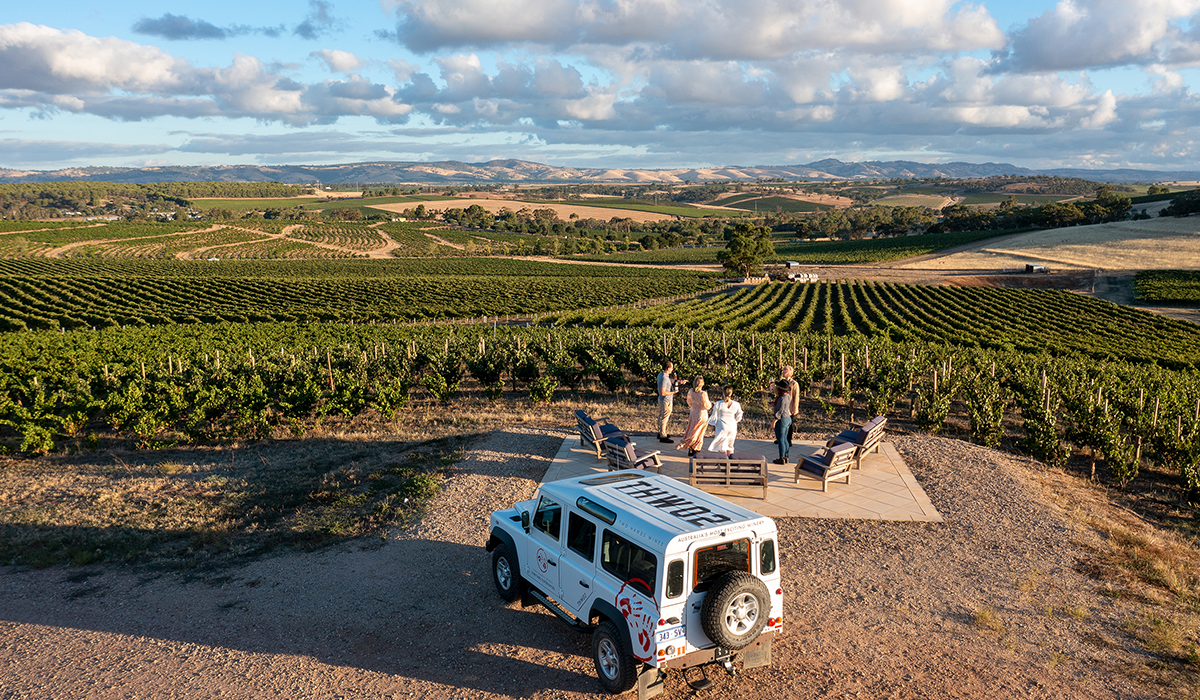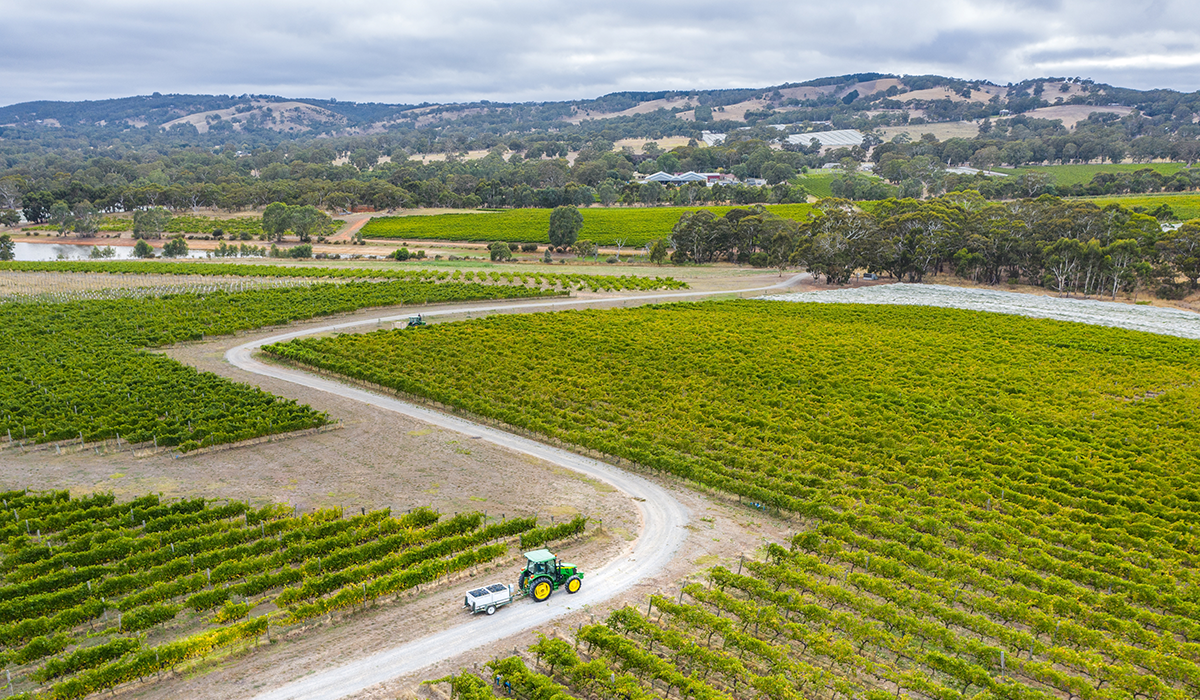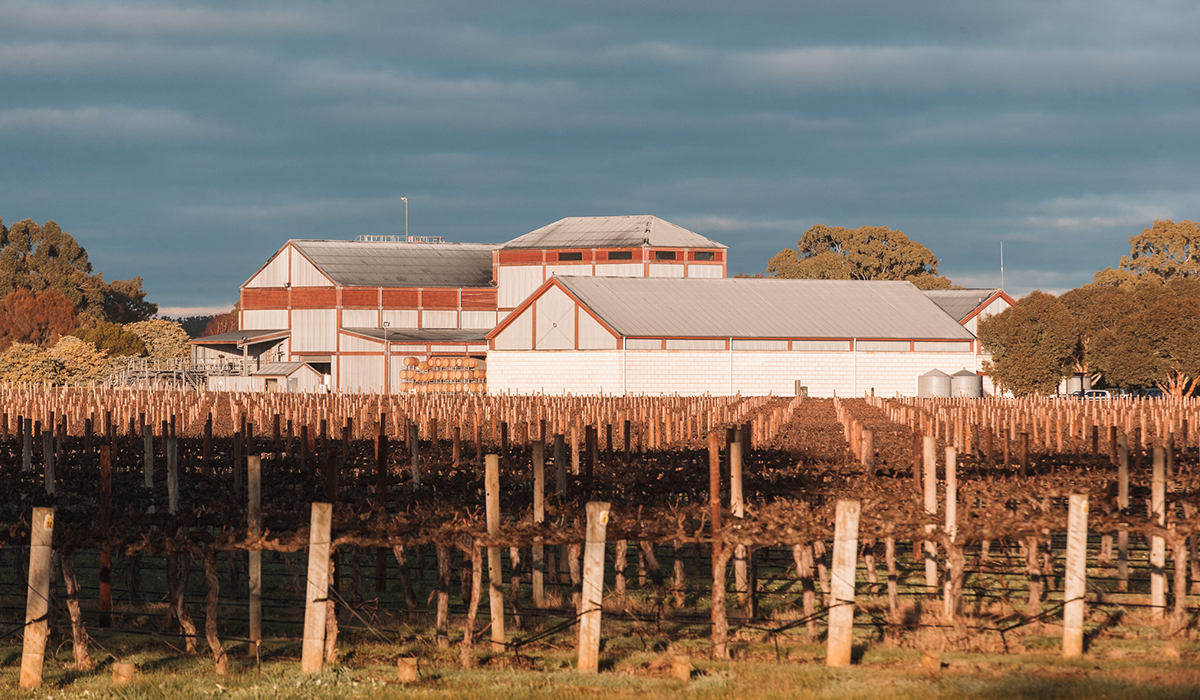The 2023 South Australia vintage
In the Barossa Valley a wet October and November rolled into a dry December, and there was preventative sprays to combat the threat of botrytis. Clare Valley riesling thrived in the cool conditions, while McLaren Vale only experienced on day over 40 degrees, meanwhile the Riverland vintage was delayed due to flood levels.
La Niña screamed its pretty little head off throughout spring, epitomised in the Barossa Valley by a wet lead up in October, which seemed almost dry once November’s rain measured 150mm+ compared to an average of 35mm. Vines assumed triffid-like proportions, with vast canopies and large crops. A dry December produced relief, but these conditions meant preventative sprays against downy mildew and the threat of botrytis. Nature provided a welcome measure of crop thinning for
grenache: the adroit viticulturists ended up with good yields of aromatic – indeed, perfumed grenache – but
cabernet sauvignon was the star, always doing best in cool vintages. Says one winemaker: ‘We will be picking in May on the Valley floor. A long time since that’s happened.’
Eden Valley started dry and warm, but then the season changed, cool and moist, riesling in its element,
shiraz the best of the reds.
 Two Hands in the Barossa Valley.
Two Hands in the Barossa Valley.
Clare Valley’s season was very late by recent standards – similar to the late ’80s.
Riesling had the best of both worlds in the cool conditions, and low to moderate yields; although, at the time of publication, it was not easy to characterise the reds.
McLaren Vale fared better than most in the lottery draw. Mild early summer, warmer January to March, only one day over 40 degrees, though below average yields. Even this had a good side, with red varieties led by shiraz offering colour and varietal intensity, and excellent density – a rare commodity for the vintage, shiraz the star.
The Adelaide Hills was marked by notable rain right through the growing season, temperatures cool to cold, the coolest for 11 years. Flowering was impacted by rain, with
pinot noir and
chardonnay hard hit, invoking low yields.
Sauvignon blanc yields were moderate, some shiraz blocks high.
Coonawarra had a mixed broth, with disease control paying handsome dividends when rain events in March turned into a distinctly wet April. One reporter enjoyed brilliant purple colours, dark blackberry, blueberry and mulberry fruits, baumes 13 degrees to 14 degrees, similar to 2017, another had variable results, cabernet lighter and leafier.
 Yangarra Estate Vineyard in McLaren Vale.
Yangarra Estate Vineyard in McLaren Vale.
Wrattonbully gave exceptional sauvignon blanc,
cabernet sauvignon and cabernet franc for those who controlled yields and opened canopies.
Padthaway’s weather ran counter to so many other regions it was testing reality, rain close to average for months on end, and there were no extended periods of hot weather. White varieties, with chardonnay in the lead, were all very good.
Langhorne Creek knew there would be challenges ahead when October tripled the average rainfall, and November quadrupled it. A week of sunny weather coincided with rapid flowering and fruit-set. But, notwithstanding the promise, yields of shiraz and cabernet were below average. When the rain returned at the end of March, sleep went out the window and one-third of the crop was harvested in three days. Another surprise was the quality of the grenache, cabernet and malbec, only a shade behind the great ’21 and ’22 vintages.
 Penley Estate in Coonawarra.
Penley Estate in Coonawarra.
Southern Fleurieu was hit hard by record winter and spring rain that continued through flowering and into what should have been summer, yields commensurately low.
Kangaroo Island joined the gang dealing with poor flowering and fruit-set followed by downy mildew, but selective picking helped (poor fruit left on the ground, ditto with late season botrytis). Low yields and clean fruit produced excellent cabernet franc,
semillon, malbec and sauvignon blanc.
Mount Benson and Robe followed suit with one excited winery reporting ‘all varieties stood out’.
The Riverland recorded its highest flood levels since 1956 and vintage was delayed by three to four weeks, which was made to measure for the white varieties, providing fresh acidity and bright flavours, although most of the reds were still on the vine in April.
Top image credit: Wine Australia.